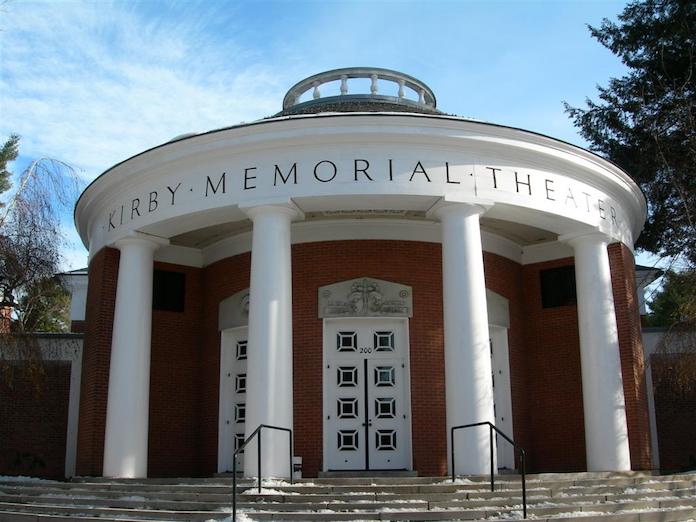Nearly 100 years ago, the president of Pomona College inaugurated The Claremont Consortium, modeled on the design of Oxford University. Blaisdell sought to provide students the intimacy of a small college coupled with the resources of a larger university, like libraries and research facilities. Today, the Claremont Consortium has grown to seven colleges including five highly-regarded liberal arts colleges – Pomona, Claremont McKenna, Harvey Mudd, Pitzer, and Scripps – and two graduate schools, all located within one square mile. With over 9,000 students, 3,600 faculty and staff, and 2,700 courses, the consortium offers students the best of both worlds.
Across the country, you’ll find several more examples of college consortia, each designed to provide students with more academic and social opportunities in a collaborative and cost-effective way.
CONSORTIUM COLLEGES (A SAMPLING)

Five College Consortium
Amherst College, Hampshire College, Mount Holyoke College, Smith College, and the University of Massachusetts at Amherst.
The Five College consortium in western Massachusetts includes top-ranked liberal arts colleges and a Division I research university; a young, unconventional campus and two of the oldest women’s colleges in the country. With 30,000 students, 2,100 faculty members, and 7,000 courses, the five campuses are linked by a free bus service.

Tri-College Consortium
Bryn Mawr College, Haverford College, and Swarthmore College.
Through this consortium, three of the nation’s highly regarded liberal arts colleges (one, a women’s college) in suburban Philadelphia, PA, expand the range of academic and social opportunities for the 4,500 students enrolled. The three colleges also join with the University of Pennsylvania to create the Quaker Consortium.

Atlanta University Center Consortium
Clark Atlanta University, Morehouse College, Spelman College, and Morehouse School of Medicine.
Today, more than 10,000 students, in total, are enrolled in this consortium. Originally formed in 1929, the consortium brought together institutions whose founding missions were to educate newly freed slaves after the Civil War and through the Reconstruction era and today represents the largest consortia of African American private institutions of higher education in the world.

Colleges of the Fenway
Emmanuel College, Massachusetts College of Art & Design, Massachusetts College of Pharmacy and Health Sciences, Simmons University, Wentworth Institute of Technology.
The collaborative effort of five neighboring Boston-based colleges was formed in the late 1990s. Collectively, the colleges represent more than 12,000 undergraduate students, more than 700 full-time faculty, and 2,300-course offerings.
MORE OPPORTUNITIES AT CONSORTIUM COLLEGES
Small liberal arts colleges are known for their dedication to undergraduate education. Faculty care deeply about teaching and, in these more intimate learning communities, students receive more individualized attention and mentorship from professors. Additionally, without graduate students on campus, undergraduate students also have greater access to research and internship opportunities. Tight-knit campus communities, small liberal arts colleges are known for fostering deep connections and lifelong friendships among students.
As small institutions themselves, however, liberal arts colleges can’t offer the same curricular breadth and depth of larger colleges and universities. Students enrolling in a consortium college have access to a much broader range of courses and majors – perhaps the most important benefit of attending a consortium school. With well-developed cross-registration systems, students can easily choose from the courses offered across their consortium – for no extra cost.
Here’s just a sampling of the academic opportunities that await you at consortium schools:
- Are you an engineer with a passion for the humanities eager to attend Harvey Mudd? You can add a minor at any of the other Claremont Colleges to your STEM major.
- Students at any of the schools in the Five College Consortium can add certificate programs in fields as varied as Asian/Pacific/American Studies and Coastal and Marine Science to International Relations and Cognitive Neuroscience.
- Students in the Colleges of the Fenway can take advantage of special minors in Performing Arts, Sustainability, and Migration Studies.
- The AUCC offers students exciting opportunities ranging from the Spike Fellowship for students with an interest in film to a dual degree engineering program with top engineering schools across the country.
Beyond the classroom, students at consortium colleges enjoy access to a broader array of resources, from libraries and laboratories to dining halls and student clubs and activities.

Application Boot Camp®
Need strategic guidance from start to finish? Try Application Boot Camp®.
NUTS AND BOLTS
Each member of a consortium operates its own, separate admissions process. As a prospective student, you should research all members of the consortium and apply to those colleges where you feel you are best matched. In some cases, the selectivity of member schools varies quite a bit. As an example, admit rates for schools in the Five College Consortium range from 9% at Amherst to 30% at Smith and 65% at UMass Amherst. At the Claremont Colleges, admit rates range from 7% at Pomona and 9% at Harvey Mudd to 19% at Pitzer and 30% at Scripps. Remember, once admitted to one college in a consortium, you’ll have access to a wider range of resources and opportunities without sacrificing the student-focused undergraduate experiences that liberal arts colleges provide.
- Class of 2028 Admissions: A Cycle Marked by New Challenges - May 13, 2024
- Global Campuses, Dual Degree and Joint Degree Programs: What You Need to Know - April 29, 2024
- College Admissions: The Year in Review - December 27, 2023



2 replies on “Consortium Colleges: The Best of Both Worlds”
How about the liberal arts schools in the Twin Cities like Macalester, St. Catherine’s, Hamline, St. Thomas, etc. whereby you can take courses at schools other than your own?
Yes, the Associated Colleges of the Twin Cities is another terrific example of an academic consortium that provides its students the best of a liberal arts college and the diverse opportunities of a larger university.